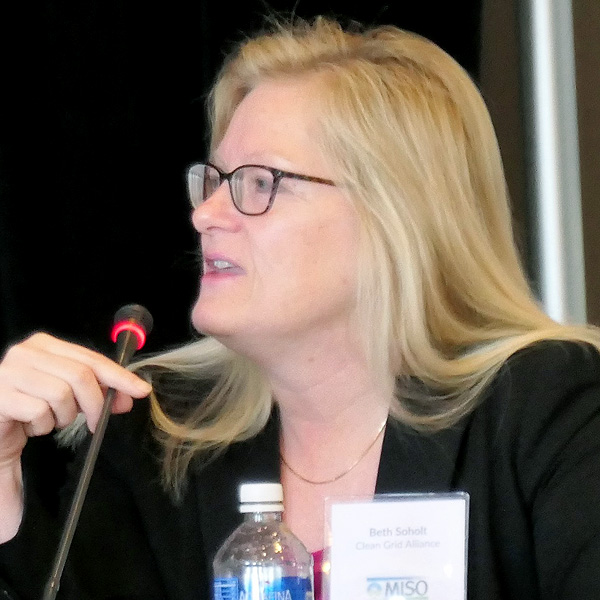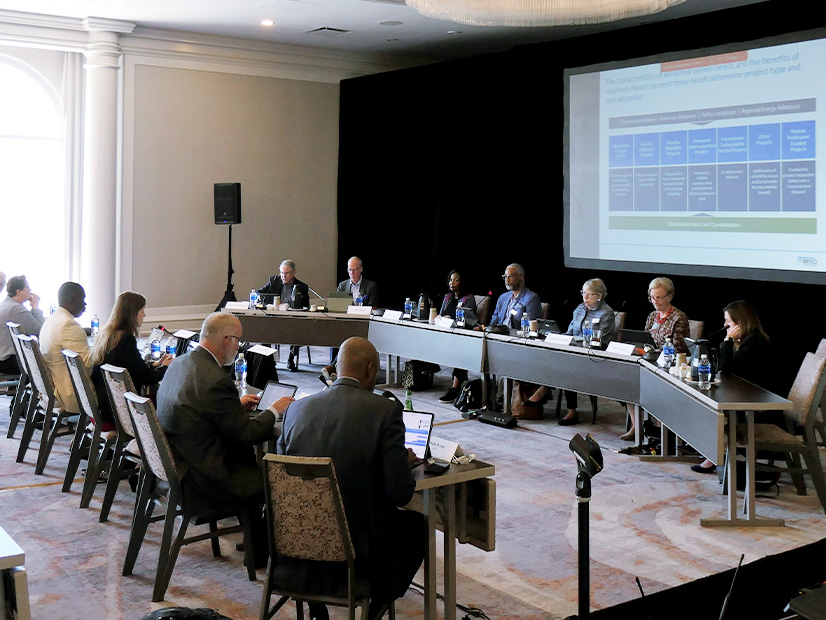NEW ORLEANS — Clean energy advocates and a transmission developer asked MISO’s Board of Directors last week for stronger transmission plans and a facility blueprint for MISO South.
Southern Renewable Energy Association’s Andy Kowalczyk said he shared multiple stakeholders’ concerns that the grid operator has waited too long to address long-term transmission needs in the South.
Noting Entergy joined MISO in 2013, he said, “I know that in transmission planning terms that seems like yesterday, but MISO South has yet to be fully connected with our neighbors to the north. Only a narrow path between the north and south exists, and there’s been no truly regional planning in the subregion compared to the north in the past decade.”
MISO plans to bring a second long-range transmission plan (LRTP) portfolio forward for the board’s consideration sometime next year. The recommendation will again be focused on MISO Midwest and could hit $30 billion, staff have said. (See MISO Says 2nd LRTP Portfolio Still in Flux.)
During the board’s System Planning Committee meeting March 21, Aubrey Johnson, vice president of system planning, said MISO’s second, middle-of-the-road, 20-year planning future indicates renewable energy and carbon reduction will increase by 2030. Past Future 2 iterations didn’t anticipate the transformation until 2040; it will influence the second leg of MISO’s LRTP.
 CGA Executive Director Beth Soholt | © RTO Insider LLC
CGA Executive Director Beth Soholt | © RTO Insider LLC
Clean Grid Alliance’s Beth Soholt said MISO’s futures refresh is “further evidence” that the transition is happening at a much faster pace than anticipated.
“A trend we’ve always had with the utilities and at MISO is that transmission capacity is full before it is constructed and goes into service,” she said. “Given the very large interconnection queue in MISO, which is responding to demand for new resources, we are seeing this same trend again.”
Soholt said the Midwest’s first planned LRTP lines are quickly being spoken for. She said the future’s update almost triples the footprint’s renewable energy resources that will require sizeable transmission additions. Soholt urged the board to ensure staff is planning to build the bulk transmission system “at the appropriate bigness.”
Kowalczyk said despite MISO’s “major successes” with its Midwest LRTP plan, “the planning paradigm needs to change for the South.” He said it “should be unacceptable” that the grid operator will wait four years before it considers Southern needs.
The New Orleans resident said he was “genuinely worried” that the southern grid will falter during future emergencies. Kowalczyk said solar projects in Arkansas and Louisiana need new transmission capacity to come online.
“We need MISO to commit to planning for the future MISO South, for the good of the entire footprint,” Kowalczyk said.
NextEra Energy’s Matt Pawlowski urged MISO to be more aggressive on transmission planning. He said early green hydrogen projects, other new load and several generation developers want to join the system. Pawlowski said the region risks losing out on renewable energy and economic development if it doesn’t get more planning intensive.
“None of this happens without transmission. The more aggressive we are, the better off we are to accommodate these loads,” he said. “The message to you on transmission is: We need to be aggressive on scenarios; we need transmission now. We’re already behind.”
Pawlowski said he doubted staff’s projections to energize the first batch of LRTP projects by 2028 or 2030. He said in his experience, construction and permitting should take 10 to 15 years, not MISO’s more optimistic forecast.
“Emerging industries like green hydrogen and offshore wind are getting a lot of attention from the business community and there are serious efforts to take advantage of federal incentives, but without being able to reliably deliver gigawatts of clean energy, they will not flourish,” Kowalczyk warned.
MISO’s “other” project category in its annual Transmission Expansion Plans drew interest at MISO Board Week. They include transmission owners’ projects needed for load growth and to address existing facilities’ ages and conditions. Stakeholders have said at times that the category appears to be a catch-all and is difficult to understand.
“How much work is MISO really doing to understand this category? I’d like to understand MISO’s due diligence on this,” Director Nancy Lange said.
Laura Rauch, senior director of transmission planning, said “other” projects often are largely driven by localized reliability needs, as opposed to NERC and regionally defined standards that drive baseline reliability projects.



